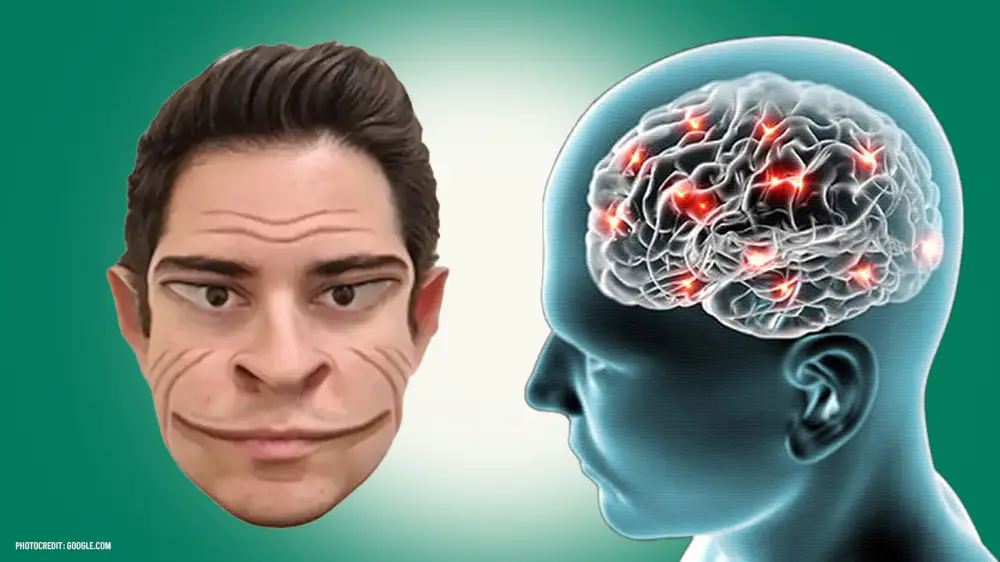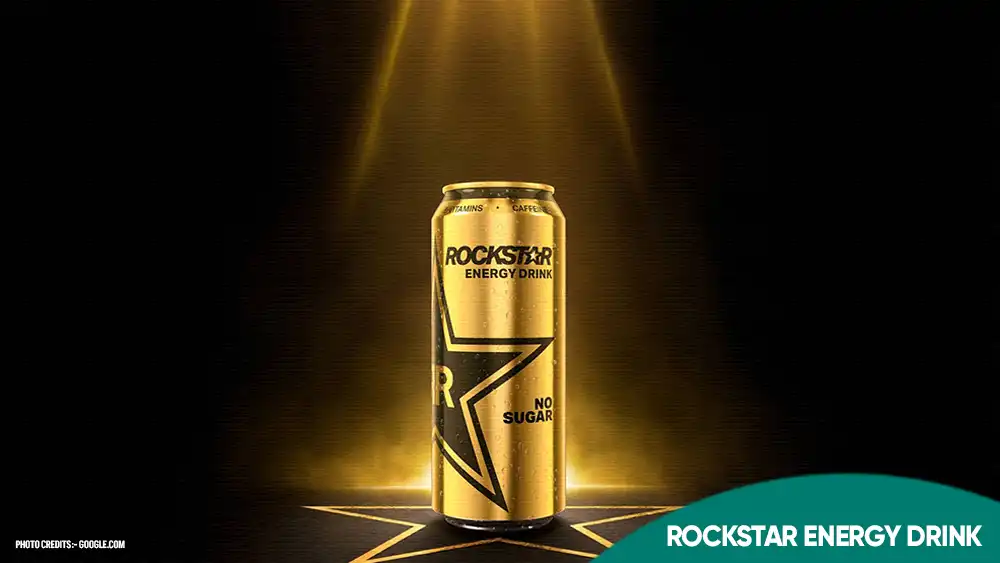
NEUROSCIENCE
Prosopometamorphopsia Symptoms, Causes, Treatment and Research
-
 Rahul Priydarss
Rahul Priydarss - March 26, 2024
Explore the complexities of Prosopometamorphopsia – a visual distortion disorder affecting facial perception. Uncover its types, symptoms, causes, treatment options, and ongoing research. Discover how Prosopometamorphopsia impacts daily life and find support resources for individuals affected by this intriguing condition.
Introduction to Prosopometamorphopsia:
Prosopometamorphopsia, a complex term coined from “prosopo” meaning faces, “metamorpho” denoting transformation or distortion, and “opsia” referring to vision, describes a unique visual phenomenon impacting how individuals perceive faces. This intriguing condition reveals a fascinating interplay between the brain’s intricate processing of visual stimuli and the perception of facial features. As we delve into the depths of prosopometamorphopsia, we uncover a captivating realm where the familiar becomes enigmatic, and facial recognition takes on an elusive quality.
Understanding this peculiar phenomenon requires a journey into the intricacies of visual perception. The human brain boasts a remarkable capacity for processing facial information, discerning nuances in expressions, and storing vast repositories of facial images for recognition. However, in the realm of prosopometamorphopsia, this intricate machinery encounters disruptions, leading to distortions in the visual representation of faces.

Table of Contents
Types of Prosopometamorphopsia:
Prosopometamorphopsia can manifest in different forms, each presenting unique characteristics and symptoms. While the underlying mechanisms may vary, the following are some common types of Prosopometamorphopsia.
1 Static Prosopometamorphopsia: In this type, individuals perceive static distortions in faces, where facial features appear consistently altered or misshapen. These distortions remain relatively constant over time and are not influenced by changes in lighting conditions or viewing angles.
2- Dynamic Prosopometamorphopsia: Dynamic Prosopometamorphopsia involves distortions in facial perception that fluctuate or change over time. Individuals may experience variations in how faces appear, with distortions becoming more pronounced during specific activities or under certain conditions.
3- Size-Disparity Prosopometamorphopsia: Size-disparity Prosopometamorphopsia refers to distortions in the perceived size of facial features relative to their actual size. This type of Prosopometamorphopsia may involve facial features appearing disproportionately larger or smaller than they are in reality.
4- Patterned Prosopometamorphopsia: Patterned Prosopometamorphopsia involves the perception of specific patterns or textures superimposed onto facial features. Individuals may see lines, grids, or other patterns overlaid on faces, leading to distortions in facial perception.
5- Localized Prosopometamorphopsia: Localized Prosopometamorphopsia affects specific regions of the face, where distortions are limited to certain facial features or areas. For example, individuals may experience distortions primarily in the eyes, nose, mouth, or other facial regions.
6- Global Prosopometamorphopsia: In contrast to localized Prosopometamorphopsia, global Prosopometamorphopsia involves distortions that affect the entire face uniformly. Individuals may perceive the entire face as distorted, with no specific regions or features spared from the visual anomalies.
7- Subjective Prosopometamorphopsia: Subjective Prosopometamorphopsia refers to distortions in facial perception that are perceived solely by the affected individual. These distortions may not be objectively observable by others and may be difficult to quantify or characterize through clinical evaluation.
8- Objective Prosopometamorphopsia: Objective Prosopometamorphopsia involves distortions in facial perception that can be objectively confirmed or observed by others. These distortions may be evident through clinical examination, neuroimaging studies, or other diagnostic tests.
Symptoms of Prosopometamorphopsia:
Symptoms of prosopometamorphopsia, a visual distortion disorder, typically involve alterations in the perception of faces. Here are the key symptoms associated with this condition.
Facial Distortion: Individuals with prosopometamorphopsia may perceive faces as distorted, warped, or misshapen. This distortion can affect various facial features, such as eyes, nose, mouth, and overall facial symmetry.
Inconsistent Recognition: People affected by prosopometamorphopsia may struggle with recognizing familiar faces consistently. Faces may appear different or unfamiliar each time they are viewed, leading to confusion and difficulty in identifying individuals.
Emotional Impact: The distorted perception of faces can evoke emotional distress, anxiety, or frustration in individuals with prosopometamorphopsia. Difficulty in recognizing faces, a crucial aspect of social interaction, can also lead to feelings of isolation or social withdrawal.
Visual Discomfort: Viewing distorted faces may cause discomfort or unease in individuals with prosopometamorphopsia. The discrepancy between the perceived and actual appearance of faces can create a sense of visual dissonance, contributing to visual discomfort.
Impaired Social Functioning: Prosopometamorphopsia can impair social functioning due to difficulties in recognizing faces and interpreting facial expressions accurately. This can affect relationships, communication, and social interactions, leading to challenges in various aspects of daily life.
Confusion and Misinterpretation: Individuals with prosopometamorphopsia may experience confusion or misinterpretation of facial expressions and emotions. The distorted perception of faces can lead to misunderstandings in social interactions, hindering effective communication.
Alterations in Facial Proportions: Perception of facial proportions may be skewed in individuals with prosopometamorphopsia, with certain facial features appearing disproportionately large, small, or out of proportion compared to their actual size.
Mask-Like Appearance: Faces may appear flat or expressionless, resembling a mask rather than conveying natural emotions or features. This mask-like appearance further contributes to the distortion of facial perception in prosopometamorphopsia.
Variable Symptom Severity: The severity of symptoms in prosopometamorphopsia can vary among individuals, ranging from mild distortions to more pronounced alterations in facial perception. Some individuals may experience intermittent symptoms, while others may have persistent and debilitating symptoms.
Impact on Daily Functioning: Prosopometamorphopsia can impact various aspects of daily functioning, including work, social interactions, and activities of daily living. Difficulty in recognizing faces and navigating social situations can pose significant challenges for affected individuals.

Causes of Prosopometamorphopsia:
Causes of Prosopometamorphopsia can vary, and the condition may arise from different underlying factors. Some common causes include.
Neurological Conditions: Certain neurological disorders, such as migraines, epilepsy, or brain injuries, can affect the visual processing areas of the brain. Disruptions in these brain regions can lead to abnormalities in how faces are perceived, resulting in Prosopometamorphopsia.
Eye Disorders: Some eye conditions, including macular degeneration, retinal detachment, or optic nerve damage, can impact visual perception. Changes in the structure or function of the eyes can contribute to distortions in how faces are perceived, leading to Prosopometamorphopsia.
Medications: Certain medications, particularly those that affect the central nervous system or alter neurotransmitter levels, may have side effects that include visual disturbances. Medications such as antiepileptic drugs, antidepressants, or antipsychotics have been associated with changes in visual perception, potentially leading to Prosopometamorphopsia.
Brain Tumors or Lesions: Structural abnormalities in the brain, such as tumors or lesions affecting the visual pathways or regions responsible for facial recognition, can cause Prosopometamorphopsia. These abnormalities can disrupt the normal processing of visual information, leading to distorted perceptions of faces.
Genetic Factors: In some cases, Prosopometamorphopsia may have a genetic component, although specific genetic mutations or predispositions are not always identified. Genetic factors may contribute to alterations in the development or function of brain regions involved in facial recognition and visual processing.
Diagnosis of Prosopometamorphopsia:
Diagnosis of Prosopometamorphopsia typically involves a comprehensive evaluation by healthcare professionals specializing in neurology, ophthalmology, or optometry. The process may include the following steps.
Clinical Evaluation: A thorough medical history is obtained to assess the patient’s symptoms, including details about the onset, duration, and progression of visual disturbances. Information about any underlying medical conditions, medications, or previous head injuries is also important to consider.
Neurological and Ophthalmological Examinations: Physical examinations focused on the neurological and visual systems are conducted to assess for any abnormalities. Neurological examinations may include tests of cranial nerve function, reflexes, and coordination, while ophthalmological examinations assess visual acuity, visual fields, and eye movements.
Visual Field Testing: Assessing the patient’s visual fields can help identify any abnormalities or visual field defects that may be contributing to Prosopometamorphopsia. Visual field testing may be performed using techniques such as confrontation testing or automated perimetry.
Imaging Studies: In some cases, imaging studies such as magnetic resonance imaging (MRI) or computed tomography (CT) scans of the brain may be recommended to evaluate the structure and function of the brain. Imaging studies can help identify any structural abnormalities, such as tumors, lesions, or other neurological conditions, that may be causing Prosopometamorphopsia.
Electrophysiological Testing: Electrophysiological tests, such as electroencephalography (EEG) or visual evoked potentials (VEPs), may be used to assess the electrical activity of the brain and visual pathways. These tests can provide valuable information about the function of the brain and may help identify abnormalities contributing to Prosopometamorphopsia.
Consultation with Specialists: Depending on the findings of the initial evaluations, consultation with other specialists, such as neurologists, neurosurgeons, or geneticists, may be warranted to further evaluate the underlying cause of Prosopometamorphopsia and determine the most appropriate treatment approach.
Treatment options for Prosopometamorphopsia:
Treatment options for Prosopometamorphopsia aim to alleviate symptoms, improve visual perception, and enhance overall quality of life for individuals affected by this condition. While there is no one-size-fits-all approach, various strategies may be employed based on the underlying cause and individual needs. Here are some common treatment modalities.
Managing Underlying Conditions: If Prosopometamorphopsia is secondary to an underlying neurological disorder, such as migraines or epilepsy, treating the primary condition may help alleviate symptoms. This may involve medications to control seizures or prevent migraine attacks, lifestyle modifications, or other targeted therapies.
Visual Aids and Techniques: Using visual aids and techniques can help individuals with Prosopometamorphopsia improve their visual perception and recognition of faces. Prism glasses, magnification devices, or colored filters may be prescribed to enhance visual clarity and reduce distortions. Additionally, learning compensatory techniques, such as focusing on specific facial features or using context cues, may be beneficial in improving facial recognition.
Psychotherapy: Psychotherapeutic approaches, such as cognitive-behavioral therapy (CBT) or counseling, can help individuals cope with the emotional and psychological challenges associated with Prosopometamorphopsia. Therapy may focus on addressing negative thoughts and feelings related to distorted perceptions, developing coping strategies, and improving self-esteem and social skills.
Vision Rehabilitation: Vision rehabilitation programs may be beneficial for individuals with Prosopometamorphopsia, particularly those with significant visual impairments. These programs offer comprehensive evaluations and personalized interventions aimed at maximizing functional vision, enhancing independence, and improving overall quality of life.
Medications: In some cases, medications may be prescribed to help alleviate symptoms of Prosopometamorphopsia. This may include medications to manage associated symptoms such as anxiety, depression, or headaches. However, the use of medications for Prosopometamorphopsia itself is limited, and treatment is typically focused on addressing underlying causes or associated conditions.
Supportive Care and Education: Providing education, support, and resources to individuals with Prosopometamorphopsia and their caregivers is essential for effectively managing the condition. This may involve connecting individuals with support groups, peer networks, and informational resources to help them better understand Prosopometamorphopsia, learn coping strategies, and navigate daily challenges.
Multidisciplinary Approach: Given the complex nature of Prosopometamorphopsia, a multidisciplinary approach involving collaboration between healthcare professionals specializing in neurology, ophthalmology, psychology, and rehabilitation is often necessary. This ensures comprehensive evaluation, individualized treatment planning, and ongoing support for individuals affected by Prosopometamorphopsia.
Research and Future Directions of Prosopometamorphopsia:
Research into Prosopometamorphopsia and its future directions hold promise for advancing our understanding of this complex visual distortion disorder and improving treatment outcomes. Here are some key areas of research and potential future directions.
Advances in Understanding: Ongoing research aims to further elucidate the underlying mechanisms of Prosopometamorphopsia. This includes studying the neural pathways and brain regions involved in facial recognition and visual processing, as well as investigating how disruptions in these pathways contribute to distorted perceptions of faces.
Neuroimaging Studies: Advances in neuroimaging techniques, such as functional magnetic resonance imaging (fMRI) and diffusion tensor imaging (DTI), allow researchers to examine the structure and function of the brain in individuals with Prosopometamorphopsia. These studies can provide valuable insights into the structural and functional abnormalities underlying the condition.
Genetic Studies: Research into the genetic basis of Prosopometamorphopsia may identify specific genetic mutations or variations associated with the condition. Identifying genetic factors involved in Prosopometamorphopsia could lead to a better understanding of its pathophysiology and potential targeted treatments.
Therapeutic Interventions: Future research may focus on developing novel therapeutic interventions for Prosopometamorphopsia. This could include pharmacological treatments targeting specific neurotransmitter systems or neural pathways involved in visual processing, as well as non-invasive brain stimulation techniques such as transcranial magnetic stimulation (TMS) or transcranial direct current stimulation (tDCS).
Psychotherapy and Rehabilitation: Research into psychotherapeutic approaches, such as cognitive-behavioral therapy (CBT) or vision rehabilitation programs, may explore their effectiveness in helping individuals cope with the emotional and psychological challenges associated with Prosopometamorphopsia. These interventions could focus on improving coping strategies, enhancing social skills, and promoting adaptation to visual distortions.
Patient-Centered Outcomes Research: Future research efforts may prioritize patient-centered outcomes research, aiming to understand the lived experiences of individuals with Prosopometamorphopsia and their caregivers. This could involve qualitative studies exploring the impact of Prosopometamorphopsia on daily functioning, quality of life, and psychosocial well-being, as well as identifying unmet needs and preferences for treatment and support services.
FAQs about Prosopometamorphopsia:
A1: Prosopometamorphopsia is a visual distortion disorder where individuals perceive faces as distorted, leading to difficulties in recognizing familiar faces accurately.
A2: Prosopometamorphopsia can be caused by neurological conditions like migraines, epilepsy, or brain injuries, as well as certain eye disorders and medications affecting visual perception.
A3: While there is no cure, various treatment options such as managing underlying conditions, using visual aids, and psychotherapy can help alleviate symptoms and improve quality of life for individuals with Prosopometamorphopsia.
A4: Prosopometamorphopsia can impact everyday activities such as recognizing faces, interpreting facial expressions, and navigating social interactions, leading to emotional distress and social difficulties.
A5: Yes, there are support groups, online communities, and resources where individuals with Prosopometamorphopsia can connect with others, share experiences, and access information and support to cope with their condition.
-Please remember, to always consult with healthcare professionals or Doctors for personalized advice related to medical conditions.
Conclusion:
Prosopometamorphopsia is a visual distortion disorder characterized by the perception of distorted faces, which can significantly impact everyday functioning and quality of life. Understanding the symptoms, causes, diagnosis, and treatment options for prosopometamorphopsia is crucial for individuals affected by this condition and their caregivers. By raising awareness, promoting research, and providing support, we can improve the lives of those living with prosopometamorphopsia.




